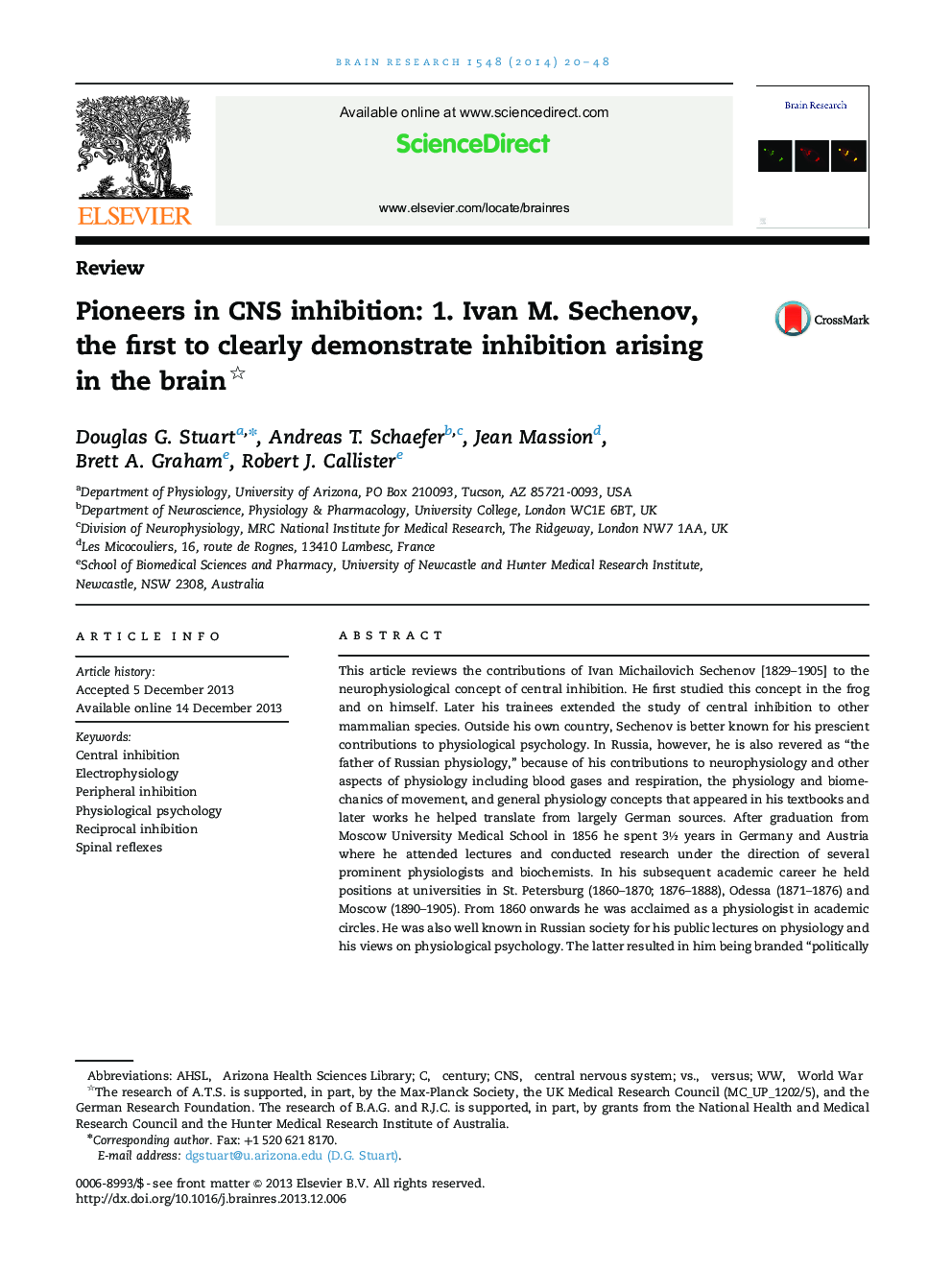| کد مقاله | کد نشریه | سال انتشار | مقاله انگلیسی | نسخه تمام متن |
|---|---|---|---|---|
| 4324476 | 1613891 | 2014 | 29 صفحه PDF | دانلود رایگان |

This article reviews the contributions of Ivan Michailovich Sechenov [1829–1905] to the neurophysiological concept of central inhibition. He first studied this concept in the frog and on himself. Later his trainees extended the study of central inhibition to other mammalian species. Outside his own country, Sechenov is better known for his prescient contributions to physiological psychology. In Russia, however, he is also revered as “the father of Russian physiology,” because of his contributions to neurophysiology and other aspects of physiology including blood gases and respiration, the physiology and biomechanics of movement, and general physiology concepts that appeared in his textbooks and later works he helped translate from largely German sources. After graduation from Moscow University Medical School in 1856 he spent 3½ years in Germany and Austria where he attended lectures and conducted research under the direction of several prominent physiologists and biochemists. In his subsequent academic career he held positions at universities in St. Petersburg (1860–1870; 1876–1888), Odessa (1871–1876) and Moscow (1890–1905). From 1860 onwards he was acclaimed as a physiologist in academic circles. He was also well known in Russian society for his public lectures on physiology and his views on physiological psychology. The latter resulted in him being branded “politically unreliable” by the tsarist bureaucracy from 1863 onwards. Sechenov's first (1862) study on central inhibition remains his most memorable. He delayed the withdrawal of a frog's foot from a weak acid solution by chemical or electrical stimulation of selected parts of the central nervous system. He also noted similar effects on his own hand during co-activation of other sensory inputs by tickling or teeth gnashing.
Journal: Brain Research - Volume 1548, 22 February 2014, Pages 20–48